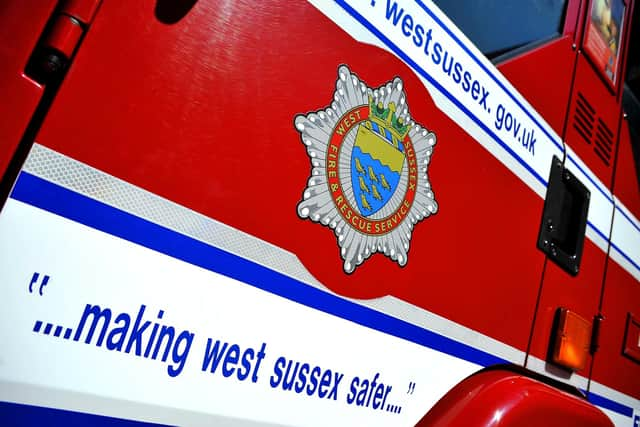Maintaining adequate retained firefighter cover is West Sussex's 'biggest performance challenge'
and live on Freeview channel 276
During a scrutiny committee meeting at County Hall, Chichester, deputy chief fire officer Mark Andrews reported on the service’s performance between July and the end of September this year.
Figures showed that there were only a sufficient number of qualified firefighters on retained fire engines 44.1 per cent of the time – the lowest it’s been since 2018/19.
Advertisement
Hide AdAdvertisement
Hide AdMr Andrews said it was the ‘most displeasing’ of the areas which had fallen short of their targets.


He added: “It’s our biggest performance challenge – as it is for many Fire & Rescue Services around the country.
“We continue to have an hourly focus on trying to maximise retained availability for our service, which often involves moving resources – whole-time firefighters and appliances – all around the county to absolutely make sure we’ve got the best and quickest available to cover risk.”
Mr Andrews told the committee that those last-minute changes were often not recorded on the various systems, meaning the percentage was actually higher.
Advertisement
Hide AdAdvertisement
Hide AdBut he acknowledged that the levels of retained firefighters was ‘something we absolutely need to focus on’.
Chief fire officer Sabrina Cohen-Hatton told councillors that contracts were currently being looked at to see whether something ‘more flexible’ could be introduced.
Of the 29 core targets the service had to meet, 13 were rated green, five were amber and 11 were red.
The committee was asked to look at five of the targets rated red and amber.
Advertisement
Hide AdAdvertisement
Hide AdAs well as the availability of retained firefighters, they were: deaths in accidental home fires, the number of automated/false alarms attended, the time taken to answer 999 calls, and the time it takes for the first fire engine to get to an emergency incident.
There were three deaths in accidental house fires in the second quarter – a figure Mr Andrews called a ‘very disappointing and tragic number’.
He told the committee that, in each case, officers looked into whether anything could have been done to prevent the fire.
He said: “Often it’s the most vulnerable people in society that fall victim to fire.”
Mr Andrews confirmed that nothing could have been done in any of the three cases.